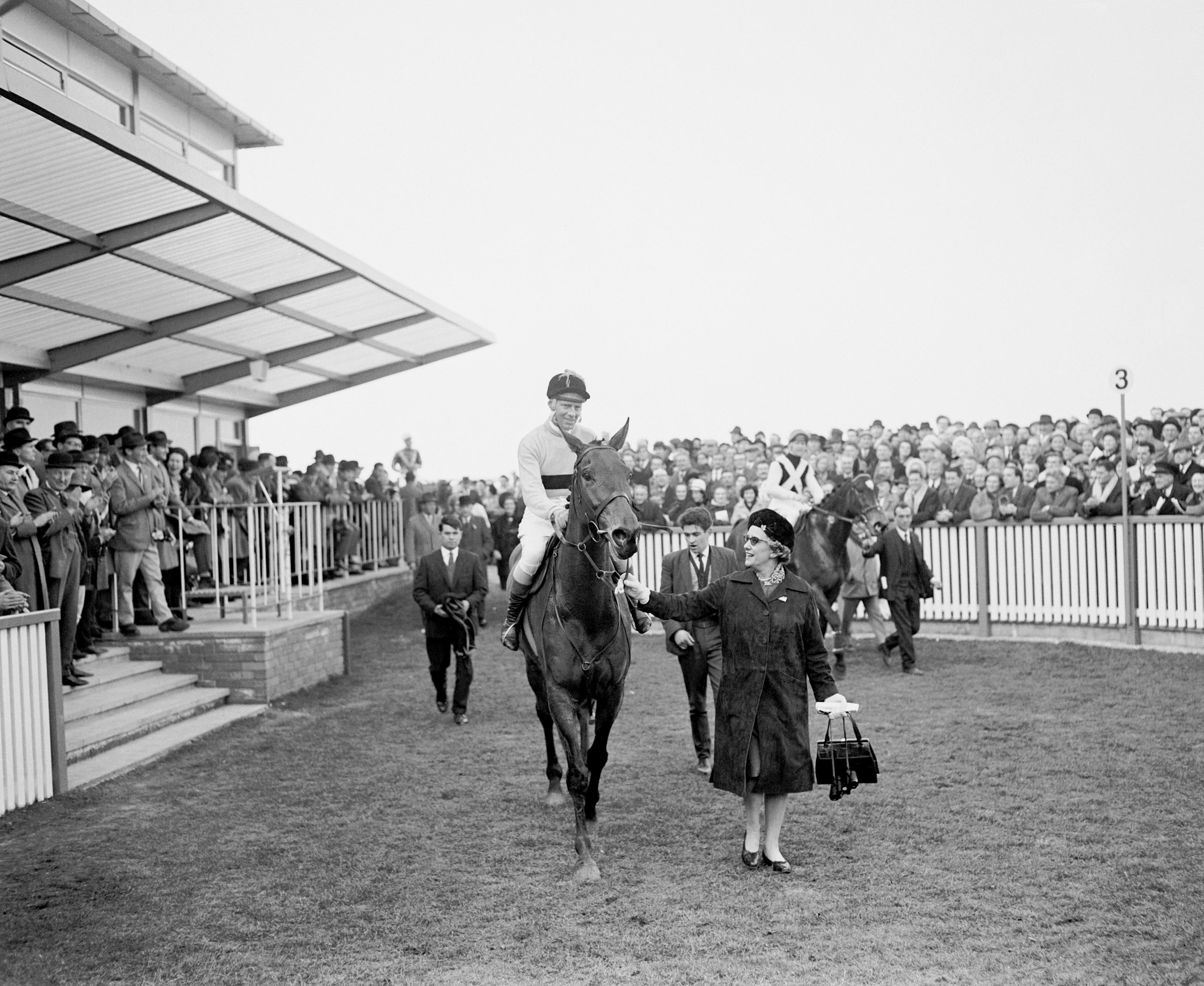Anne, Duchess of Westminster (1913-2003)
Anne, Duchess of Westminster was described once as “every trainer’s dream owner”. Known as Nancy, she had grown up in Ireland, the daughter of a brigadier-general in the Indian Army, and had spent World War Two acting as a personnel driver for six years. On her return to Ireland, she met the considerably older Hugh Grosvenor, the second Duke of Westminster. Nicknamed Bend’Or after his Grandfather’s Derby winner, he was instantly smitten by Nancy. So smitten, in fact, that England’s richest man promptly brought the property next door to her parent’s house and installed the young Nancy to help her with the flowers.
She became his fourth wife in 1947, marrying at Chester Register’s office to keep the press away. They spent most of their time at Eaton Hall in Cheshire, eschewing London life and both were avid fans of fishing and horse racing, with the Duke preferring a quieter life in his later years.
They attended Queen Elizabeth II Coronation in June 1953, but just a month later the Duke died, leaving death duties of £19m, the biggest of its kind at that time, necessitating a new department to be created at the Inland Revenue to deal with the estate.
Nancy retired to a Lodge on the Eaton Hall estate and in 1958 persuaded Tom Dreaper to train her first horse for her. Sentina, who won the National Hunt Chase that year, carrying her yellow and black colours – a derivation of the yellow with gold tassel silks of Eaton Stud – the black band in remembrance of her late husband.
In 1960 she spotted an unbroken three-year-old at Ballsbridge Sales and purchased the bay gelding for 1,150guineas. She named him after a mountain near her estate in Sutherland. Arkle was to go on to become a legend.
“Himself” won his first visit to Cheltenham – in the 1963 Broadway Chase (now Brown Advisory) - by 20 lengths, with Mill House taking the honours in the Cheltenham Gold Cup that year. The two horses' careers were inextricably linked, with Arkle winning their first head-to-head at Cheltenham, storming up the hill to win by 5 lengths in the 1964 race. He increased his margin of superiority the next year to 25 lengths.
In the 1966 renewal, he was the shortest-priced favourite in history to win the Gold Cup, starting at odds of 1/10. He won by 30 lengths, hard held, despite a mistake early in the race where he ploughed through the eleventh fence, allegedly looking at his adoring fans in the stands.
Arkle had a strange quirk in that he crossed his forelegs when jumping a fence. His owner did not let him take his chance in the Grand National - in fact, she never saw him jump the last fence – “I don’t look up until it’s over. One can grow awfully fond of a horse you know”. They had a great relationship, with stories that Arkle recognised his owner's voice and car – banging on the stable door upon hearing them, demanding his favoured sugar cubes and mints.
The public also grew very fond of Arkle – fan mail addressed simply “Arkle, Ireland” found its way to him. He was retired after breaking his pedal bone in the 1966 King George, and suffering from increased stiffness and pain was put down in May 1970. The famous yellow and black silks went on to further success and secured a fourth Gold Cup when Ten Up won the 1975 renewal, and Last Suspect captured the 1985 running of the Grand National. But her name will always be synonymous with the greatest - Arkle.


